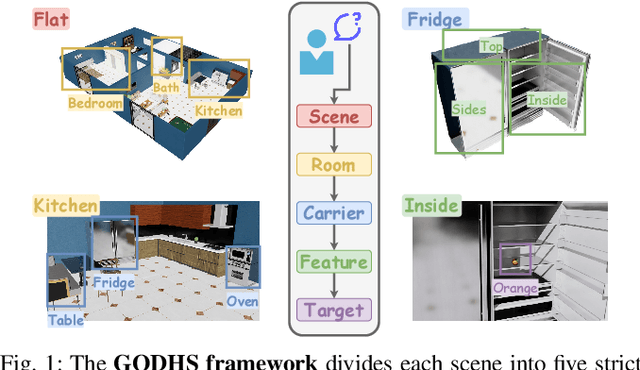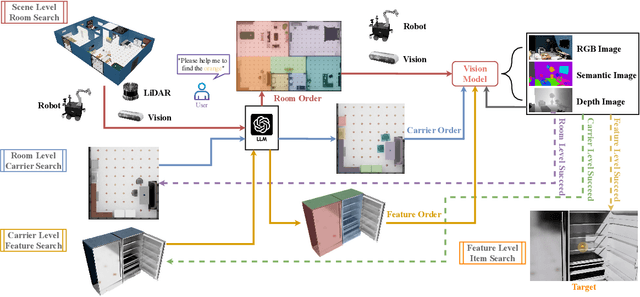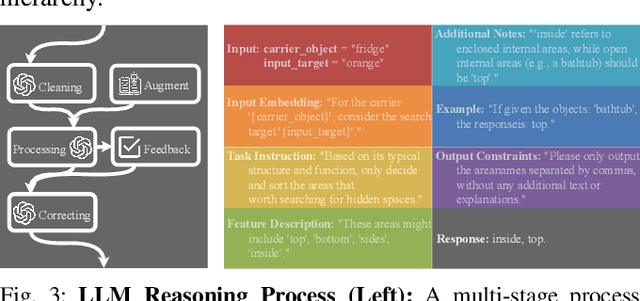Alois Knoll
Department of Computer Engineering, School of Computation, Information and Technology, Technical University of Munich
LLM-Based Approach for Enhancing Maintainability of Automotive Architectures
Sep 16, 2025Abstract:There are many bottlenecks that decrease the flexibility of automotive systems, making their long-term maintenance, as well as updates and extensions in later lifecycle phases increasingly difficult, mainly due to long re-engineering, standardization, and compliance procedures, as well as heterogeneity and numerosity of devices and underlying software components involved. In this paper, we explore the potential of Large Language Models (LLMs) when it comes to the automation of tasks and processes that aim to increase the flexibility of automotive systems. Three case studies towards achieving this goal are considered as outcomes of early-stage research: 1) updates, hardware abstraction, and compliance, 2) interface compatibility checking, and 3) architecture modification suggestions. For proof-of-concept implementation, we rely on OpenAI's GPT-4o model.
GenAI-based test case generation and execution in SDV platform
Sep 05, 2025Abstract:This paper introduces a GenAI-driven approach for automated test case generation, leveraging Large Language Models and Vision-Language Models to translate natural language requirements and system diagrams into structured Gherkin test cases. The methodology integrates Vehicle Signal Specification modeling to standardize vehicle signal definitions, improve compatibility across automotive subsystems, and streamline integration with third-party testing tools. Generated test cases are executed within the digital.auto playground, an open and vendor-neutral environment designed to facilitate rapid validation of software-defined vehicle functionalities. We evaluate our approach using the Child Presence Detection System use case, demonstrating substantial reductions in manual test specification effort and rapid execution of generated tests. Despite significant automation, the generation of test cases and test scripts still requires manual intervention due to current limitations in the GenAI pipeline and constraints of the digital.auto platform.
Estimated Informed Anytime Search for Sampling-Based Planning via Adaptive Sampler
Aug 29, 2025Abstract:Path planning in robotics often involves solving continuously valued, high-dimensional problems. Popular informed approaches include graph-based searches, such as A*, and sampling-based methods, such as Informed RRT*, which utilize informed set and anytime strategies to expedite path optimization incrementally. Informed sampling-based planners define informed sets as subsets of the problem domain based on the current best solution cost. However, when no solution is found, these planners re-sample and explore the entire configuration space, which is time-consuming and computationally expensive. This article introduces Multi-Informed Trees (MIT*), a novel planner that constructs estimated informed sets based on prior admissible solution costs before finding the initial solution, thereby accelerating the initial convergence rate. Moreover, MIT* employs an adaptive sampler that dynamically adjusts the sampling strategy based on the exploration process. Furthermore, MIT* utilizes length-related adaptive sparse collision checks to guide lazy reverse search. These features enhance path cost efficiency and computation times while ensuring high success rates in confined scenarios. Through a series of simulations and real-world experiments, it is confirmed that MIT* outperforms existing single-query, sampling-based planners for problems in R^4 to R^16 and has been successfully applied to real-world robot manipulation tasks. A video showcasing our experimental results is available at: https://youtu.be/30RsBIdexTU
Genetic Informed Trees (GIT*): Path Planning via Reinforced Genetic Programming Heuristics
Aug 28, 2025



Abstract:Optimal path planning involves finding a feasible state sequence between a start and a goal that optimizes an objective. This process relies on heuristic functions to guide the search direction. While a robust function can improve search efficiency and solution quality, current methods often overlook available environmental data and simplify the function structure due to the complexity of information relationships. This study introduces Genetic Informed Trees (GIT*), which improves upon Effort Informed Trees (EIT*) by integrating a wider array of environmental data, such as repulsive forces from obstacles and the dynamic importance of vertices, to refine heuristic functions for better guidance. Furthermore, we integrated reinforced genetic programming (RGP), which combines genetic programming with reward system feedback to mutate genotype-generative heuristic functions for GIT*. RGP leverages a multitude of data types, thereby improving computational efficiency and solution quality within a set timeframe. Comparative analyses demonstrate that GIT* surpasses existing single-query, sampling-based planners in problems ranging from R^4 to R^16 and was tested on a real-world mobile manipulation task. A video showcasing our experimental results is available at https://youtu.be/URjXbc_BiYg
Language-Enhanced Mobile Manipulation for Efficient Object Search in Indoor Environments
Aug 28, 2025



Abstract:Enabling robots to efficiently search for and identify objects in complex, unstructured environments is critical for diverse applications ranging from household assistance to industrial automation. However, traditional scene representations typically capture only static semantics and lack interpretable contextual reasoning, limiting their ability to guide object search in completely unfamiliar settings. To address this challenge, we propose a language-enhanced hierarchical navigation framework that tightly integrates semantic perception and spatial reasoning. Our method, Goal-Oriented Dynamically Heuristic-Guided Hierarchical Search (GODHS), leverages large language models (LLMs) to infer scene semantics and guide the search process through a multi-level decision hierarchy. Reliability in reasoning is achieved through the use of structured prompts and logical constraints applied at each stage of the hierarchy. For the specific challenges of mobile manipulation, we introduce a heuristic-based motion planner that combines polar angle sorting with distance prioritization to efficiently generate exploration paths. Comprehensive evaluations in Isaac Sim demonstrate the feasibility of our framework, showing that GODHS can locate target objects with higher search efficiency compared to conventional, non-semantic search strategies. Website and Video are available at: https://drapandiger.github.io/GODHS
Deep Fuzzy Optimization for Batch-Size and Nearest Neighbors in Optimal Robot Motion Planning
Aug 28, 2025Abstract:Efficient motion planning algorithms are essential in robotics. Optimizing essential parameters, such as batch size and nearest neighbor selection in sampling-based methods, can enhance performance in the planning process. However, existing approaches often lack environmental adaptability. Inspired by the method of the deep fuzzy neural networks, this work introduces Learning-based Informed Trees (LIT*), a sampling-based deep fuzzy learning-based planner that dynamically adjusts batch size and nearest neighbor parameters to obstacle distributions in the configuration spaces. By encoding both global and local ratios via valid and invalid states, LIT* differentiates between obstacle-sparse and obstacle-dense regions, leading to lower-cost paths and reduced computation time. Experimental results in high-dimensional spaces demonstrate that LIT* achieves faster convergence and improved solution quality. It outperforms state-of-the-art single-query, sampling-based planners in environments ranging from R^8 to R^14 and is successfully validated on a dual-arm robot manipulation task. A video showcasing our experimental results is available at: https://youtu.be/NrNs9zebWWk
Elliptical K-Nearest Neighbors -- Path Optimization via Coulomb's Law and Invalid Vertices in C-space Obstacles
Aug 27, 2025Abstract:Path planning has long been an important and active research area in robotics. To address challenges in high-dimensional motion planning, this study introduces the Force Direction Informed Trees (FDIT*), a sampling-based planner designed to enhance speed and cost-effectiveness in pathfinding. FDIT* builds upon the state-of-the-art informed sampling planner, the Effort Informed Trees (EIT*), by capitalizing on often-overlooked information in invalid vertices. It incorporates principles of physical force, particularly Coulomb's law. This approach proposes the elliptical $k$-nearest neighbors search method, enabling fast convergence navigation and avoiding high solution cost or infeasible paths by exploring more problem-specific search-worthy areas. It demonstrates benefits in search efficiency and cost reduction, particularly in confined, high-dimensional environments. It can be viewed as an extension of nearest neighbors search techniques. Fusing invalid vertex data with physical dynamics facilitates force-direction-based search regions, resulting in an improved convergence rate to the optimum. FDIT* outperforms existing single-query, sampling-based planners on the tested problems in R^4 to R^16 and has been demonstrated on a real-world mobile manipulation task.
Tree-Based Grafting Approach for Bidirectional Motion Planning with Local Subsets Optimization
Aug 27, 2025Abstract:Bidirectional motion planning often reduces planning time compared to its unidirectional counterparts. It requires connecting the forward and reverse search trees to form a continuous path. However, this process could fail and restart the asymmetric bidirectional search due to the limitations of lazy-reverse search. To address this challenge, we propose Greedy GuILD Grafting Trees (G3T*), a novel path planner that grafts invalid edge connections at both ends to re-establish tree-based connectivity, enabling rapid path convergence. G3T* employs a greedy approach using the minimum Lebesgue measure of guided incremental local densification (GuILD) subsets to optimize paths efficiently. Furthermore, G3T* dynamically adjusts the sampling distribution between the informed set and GuILD subsets based on historical and current cost improvements, ensuring asymptotic optimality. These features enhance the forward search's growth towards the reverse tree, achieving faster convergence and lower solution costs. Benchmark experiments across dimensions from R^2 to R^8 and real-world robotic evaluations demonstrate G3T*'s superior performance compared to existing single-query sampling-based planners. A video showcasing our experimental results is available at: https://youtu.be/3mfCRL5SQIU
APT*: Asymptotically Optimal Motion Planning via Adaptively Prolated Elliptical R-Nearest Neighbors
Aug 27, 2025



Abstract:Optimal path planning aims to determine a sequence of states from a start to a goal while accounting for planning objectives. Popular methods often integrate fixed batch sizes and neglect information on obstacles, which is not problem-specific. This study introduces Adaptively Prolated Trees (APT*), a novel sampling-based motion planner that extends based on Force Direction Informed Trees (FDIT*), integrating adaptive batch-sizing and elliptical $r$-nearest neighbor modules to dynamically modulate the path searching process based on environmental feedback. APT* adjusts batch sizes based on the hypervolume of the informed sets and considers vertices as electric charges that obey Coulomb's law to define virtual forces via neighbor samples, thereby refining the prolate nearest neighbor selection. These modules employ non-linear prolate methods to adaptively adjust the electric charges of vertices for force definition, thereby improving the convergence rate with lower solution costs. Comparative analyses show that APT* outperforms existing single-query sampling-based planners in dimensions from $\mathbb{R}^4$ to $\mathbb{R}^{16}$, and it was further validated through a real-world robot manipulation task. A video showcasing our experimental results is available at: https://youtu.be/gCcUr8LiEw4
Direction Informed Trees (DIT*): Optimal Path Planning via Direction Filter and Direction Cost Heuristic
Aug 26, 2025Abstract:Optimal path planning requires finding a series of feasible states from the starting point to the goal to optimize objectives. Popular path planning algorithms, such as Effort Informed Trees (EIT*), employ effort heuristics to guide the search. Effective heuristics are accurate and computationally efficient, but achieving both can be challenging due to their conflicting nature. This paper proposes Direction Informed Trees (DIT*), a sampling-based planner that focuses on optimizing the search direction for each edge, resulting in goal bias during exploration. We define edges as generalized vectors and integrate similarity indexes to establish a directional filter that selects the nearest neighbors and estimates direction costs. The estimated direction cost heuristics are utilized in edge evaluation. This strategy allows the exploration to share directional information efficiently. DIT* convergence faster than existing single-query, sampling-based planners on tested problems in R^4 to R^16 and has been demonstrated in real-world environments with various planning tasks. A video showcasing our experimental results is available at: https://youtu.be/2SX6QT2NOek
 Add to Chrome
Add to Chrome Add to Firefox
Add to Firefox Add to Edge
Add to Edge